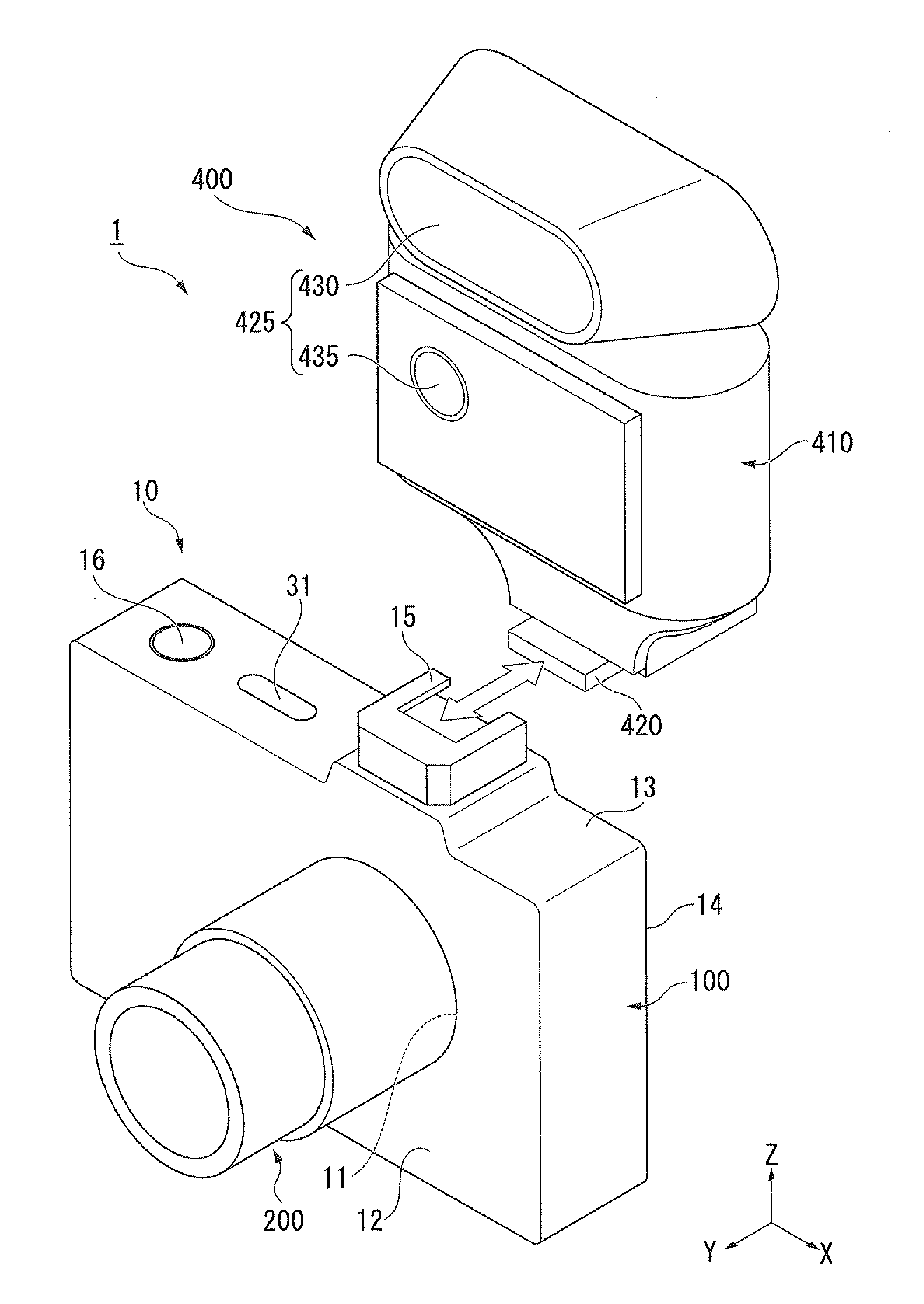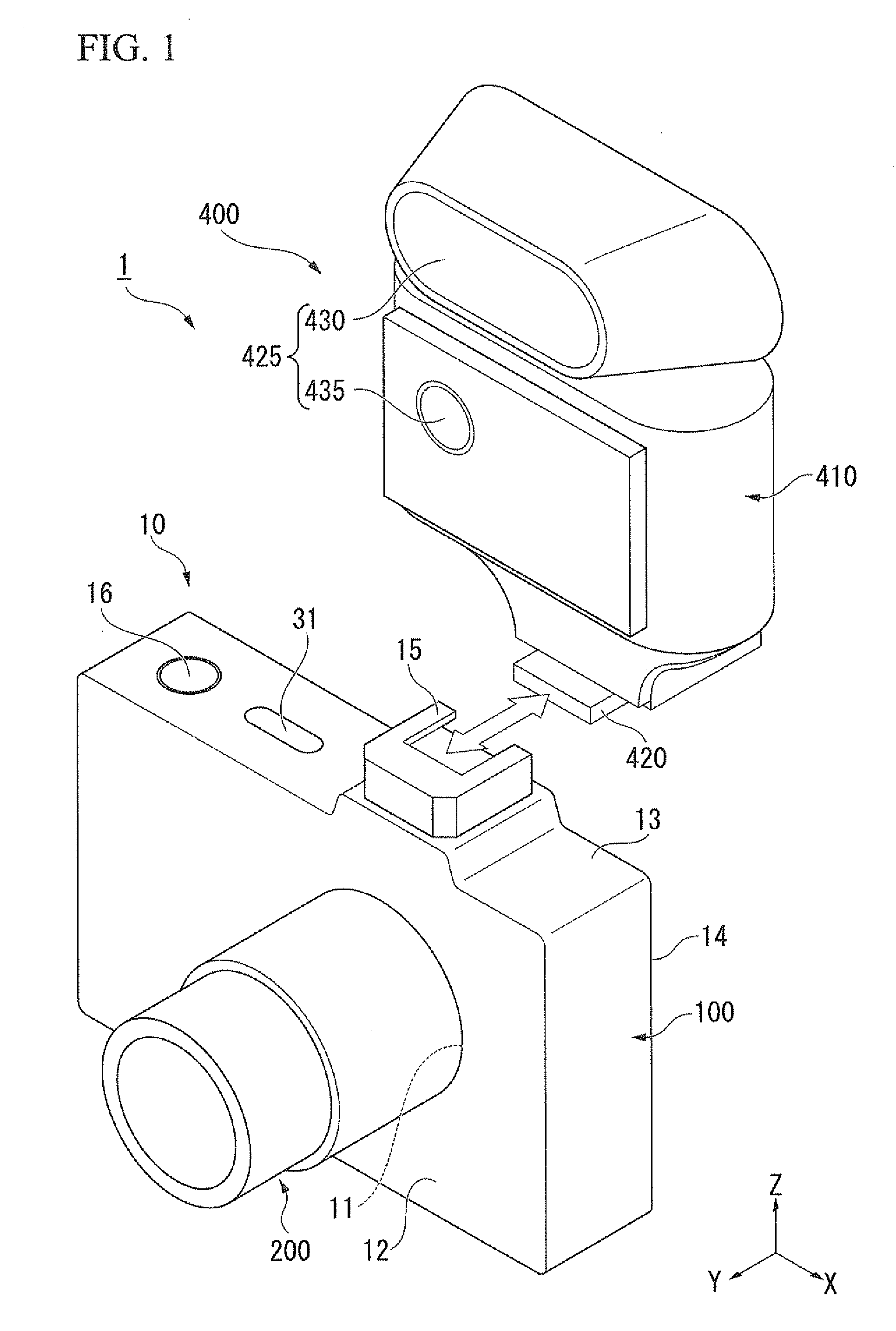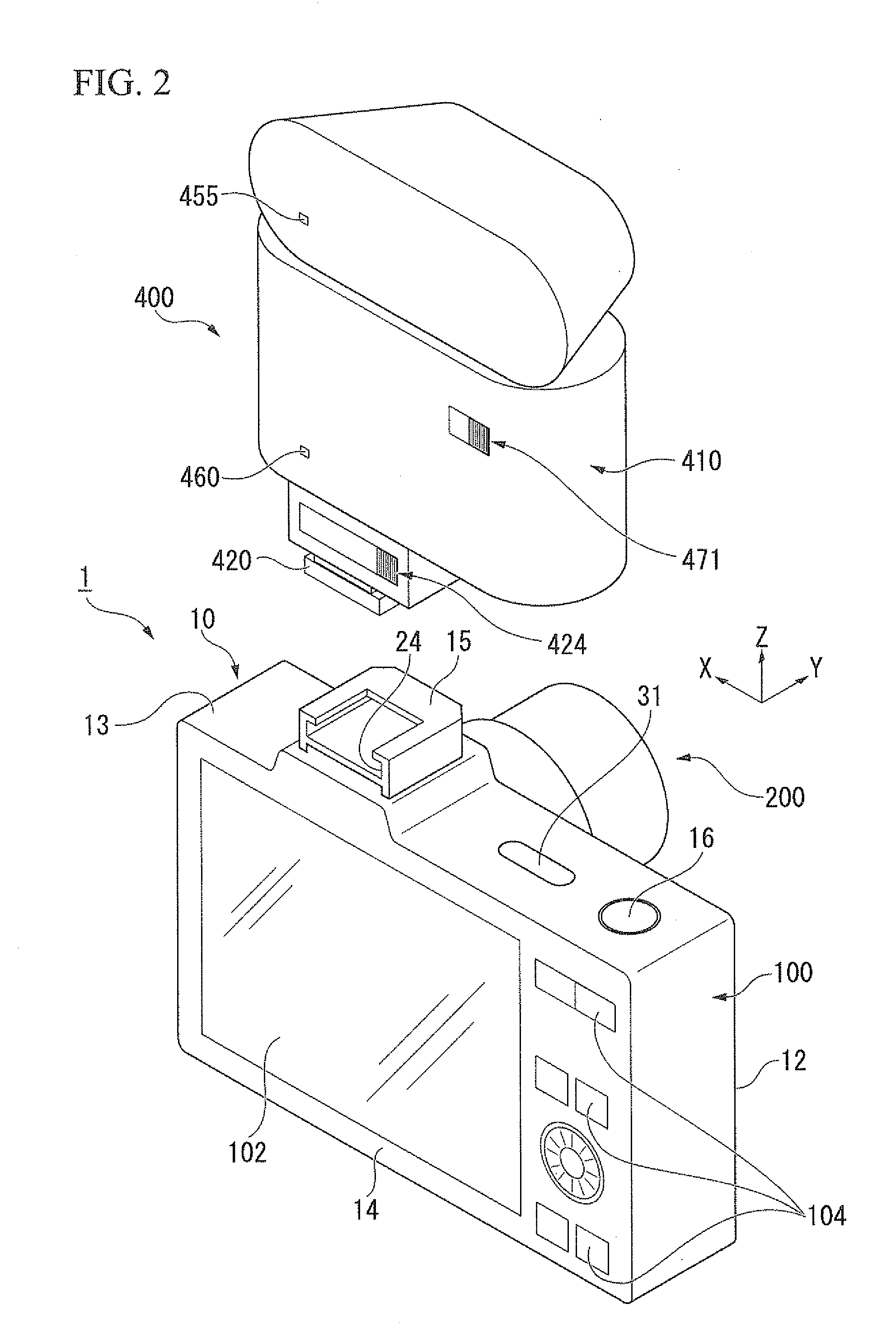Accessory, camera, accessory control program, and camera control program
a technology for controlling programs and accessories, applied in the field of accessories, cameras, and control programs, can solve the problems of low usability of cameras, and achieve the effect of high convenien
- Summary
- Abstract
- Description
- Claims
- Application Information
AI Technical Summary
Benefits of technology
Problems solved by technology
Method used
Image
Examples
modified example 1
[0415]First, Modified. Example 1 will be described. FIG. 25 is a diagram illustrating a procedure of processes in an initial communication sequence of Modified Example 1. A series of processes in Modified Example 1 is different from a series of processes described with reference to FIG. 12, in that after the process of step S204, it is determined in step S260 whether information is received normally from the accessory control section 440.
[0416]In Modified Example 1, subsequently to the reception of the accessory initial state information from the accessory control section 440, for example, in step S204, the camera control section 170 determines whether information is received normally from the accessory control section 440 (step S260).
[0417]Explaining for more details, in step S260, when the accessory initial state information received in step S204 includes information (for example, battery presence or absence information and function type information) of items designated by the tra...
modified example 2
[0431]Next, Modified Example 2 will be described. FIG. 26 is a diagram illustrating a procedure of processes in a power supply control of Modified Example 2. A series of processes in Modified Example 2 is different from a series of processes described with reference to FIG. 14, in that after the process of step S250, it is determined in step S262 whether the information is received normally from the accessory control section 440.
[0432]In Modified Example 2, when it is determined in step S250 that the accessory 400 does not have a battery (step S250: NO), the camera control section 170 determines whether the battery “absence” information is received normally in step S262. In step S262, the camera control section 170 determines that the information is received normally (step S262: Yes) when the battery “absence” information is received in step S204, and continues the supply of power to the accessory 400 started in step S103. In addition, in step S262, the camera control section 170 de...
modified example 3
[0434]Next, Modified Example 3 will be described. FIG. 27 is a diagram illustrating a procedure of processes of a charging control in Modified Example 3. A series of processes in Modified Example 3 is different from a series of processes described with reference to FIG. 20, in that after the process of step S430, it is determined in step S263 whether the information is received normally from the accessory control section 440.
[0435]In Modified Example 3, the determination process of step S263 is executed in each of the cases where it is determined in step S430 that the charging section 432 is not capable of being charged based on the chargeability information (step S430: No), it is determined in step S431 that the monitor charging request is not present based on the charging request information (step S431: No), it is determined in step S439 that the charging section 432 is not being charged based on the charging lapse information (step S439: No), and it is determined in step S440 tha...
PUM
 Login to View More
Login to View More Abstract
Description
Claims
Application Information
 Login to View More
Login to View More - R&D
- Intellectual Property
- Life Sciences
- Materials
- Tech Scout
- Unparalleled Data Quality
- Higher Quality Content
- 60% Fewer Hallucinations
Browse by: Latest US Patents, China's latest patents, Technical Efficacy Thesaurus, Application Domain, Technology Topic, Popular Technical Reports.
© 2025 PatSnap. All rights reserved.Legal|Privacy policy|Modern Slavery Act Transparency Statement|Sitemap|About US| Contact US: help@patsnap.com



